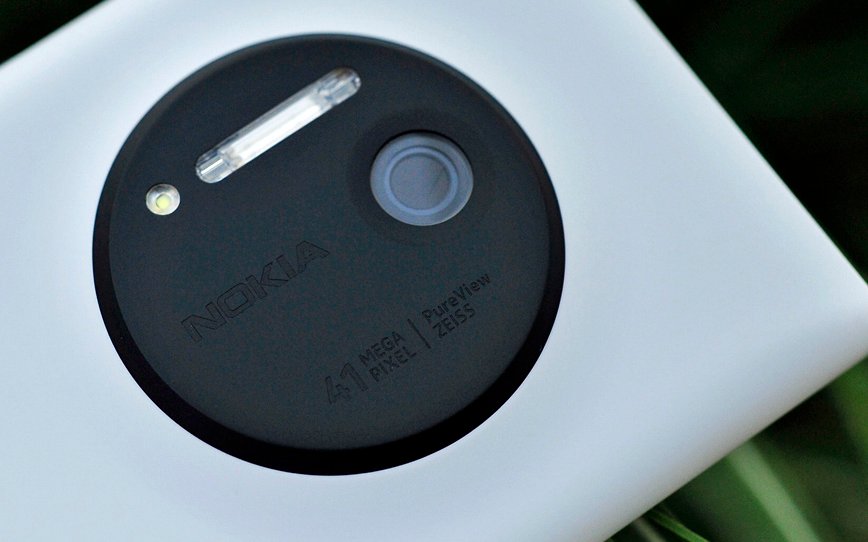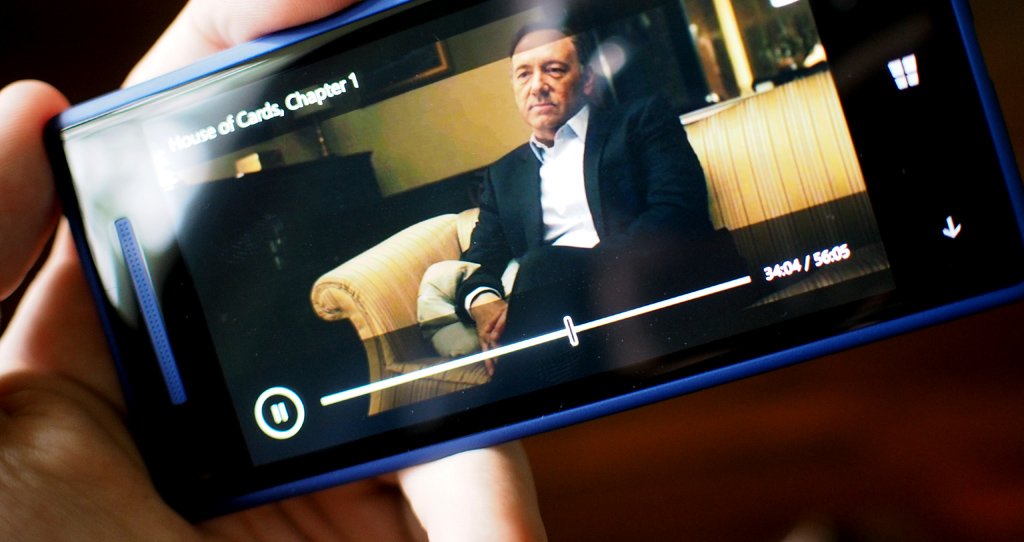The future of mobile creation and productivity - Talk Mobile

Presented by BlackBerry
Talk Mobile Creativity
The future of mobile creation and productivity
All this week we've talked about mobile creativity and productivity, be it what we can do with cameras or speakers or business apps. Today we're going to talk about those same things, but not so much what we can do today, but what we'll be able to do tomorrow. It's time to tackle the future of creativity and mobile business.
There's no doubt that the sensors, processors, radios, screens, and batteries that comprise our phones will improve over time. It's the inexorable march forward of technology. These better bits and the inevitable new bits will make things faster and open new avenues of computing. But what will we be able to do with these new things?
Just what does the future of mobile photography look like, and will it be good enough for us to never regret leaving the point-and-shoot at home? Is it lagging technology or corporate resistance that's holding back mobile video? And how can our smartphones make us even more productive while on the go?
Let's get the conversation started!
by Rene Ritchie, Daniel Rubino, Kevin Michaluk, and Phil Nickinson
Be an expert in 5 minutes
Get the latest news from Android Central, your trusted companion in the world of Android





Creative futures
Articles navigation

Daniel Rubino Windows Phone Central
Bigger sensors, brighter pixels, and smarter software
The big advancements that are coming in the coming years are optical image stabilization (OIS), which allows jitter-free video and longer exposures by eliminating hand shake. Such mechanisms rely on ball-bearing systems and "floating lens" technology to allow the camera to compensate for your unsteady hands. That technology is already out in high-end smartphones, but like all tech it will seep downward into more mid-range devices for the masses. It's truly a game changer in terms of quality improvement.

41 million pixels
In February 2012, Nokia wowed and puzzled with the Nokia 808 PureView. The Symbian-powered smartphone packed a massive 5/6-inch sensor with 41 megapixels worth of sensor. The 808's sensor was the largest ever packed into a smartphone - four times the size of the average point-and-shoot camera. The 808 never sold in large numbers, in part thanks to a high price, aging operating system, and unwieldy bulk.
Nokia continued the PureView branding with a release that November of the Lumia 920, but it carried an 8 megapixel camera (though it benefited from lessons learned from the 808 PureView). The true successor came in the form of 2013's Windows Phone 8-powered Lumia 1020, which again amazed with a whopping 41 megapixels, though on a slightly smaller 2/3-inch sensor (still massive for a smartphone).
The Lumia 1020 simultaneously captures photos at 38 megapixels and 5 megapixels, and its software allows users to "zoom" in on sections of the larger version to crop without loosing detail. Additionally, the launch of the 1020 coincided with the availability of the Nokia Pro Cam app, enabling unprecedented manual control of shutter speed, aperture, and more.
Cramming better sensors into our smartphones will continue unabated. There are a few routes a company can take. Samsung and Sony are gunning for more and more megapixels, while HTC actually dialed back the pixel count on the HTC One so they could have larger pixels for better light detection (and smaller 4-megapixel images).
Nokia's Lumia 1020 went in the opposite direction with a massive 2/3-inch packed with 41 million pixels. Apple is splitting the difference between HTC's giant pixels and Nokia's giant sensor with the iPhone 5s, which has a larger sensor than its predecessor, but is still 8 megapixels for larger, more sensitive pixels
Samsung gets points for trying with the Galaxy S4 Zoom but between critics and consumers alike balking the awkward design, I'm not convinced that physical zoom lenses are the next trend. Still, it's an interesting solution to a vexing problem: how to see more with less. Sony, too, gets points for trying with the clip-on QX10 and QX100 sensor-and-lens packages.
Software will define what makes a camera great in the coming years.
But more than bigger pixels, better stabilization, or brighter lenses, it will be software that defines what makes a camera great in the coming years. The Nokia Lumia 1020 takes great pictures, no doubt, but coupled with Nokia Pro Cam for fine manual control it can take amazing photos. The iPhone 5s can take a rapid sequence of photos and automatically pick out the best of them for you. Software is the future of the camera.
With 2014 around the corner and mobile photography the next big thing, we expect a lot of investment and production creation in this field in the coming years, allowing you to finally not doubt your choice to leave the dedicated camera at home.

The real future of mobile photography is going to come from the software behind the lens.
- Derek Kessler / Managing Editor, Mobile Nations
What camera feature do you most want in your smartphone?
876 comments


Phil Nickinson Android Central
Mobile audio has many battlefields left to conquer
I remember arguing with one of my former newspaper editors — who was completely enamored with the iPod when it was first announced — that, no, it wasn't going to change the way we way we listen to music. It still was making its way from headphones to your ears, right?
Maybe I was being a little ornery. iTunes did significantly change the way music is bought and sold, legitimizing digital music in the process. Dedicated MP3 players are hanging on, but they've already been relegated to niche status.
Like cameras, the best music player is the one you have with you. And that means your phone or tablet. Thankfully, these devices are almost universally competent performers.

1,000 songs in your pocket
The original Apple iPod was introduced 2001. It had mechanical scroll wheel, FireWire port, 5GB of storage on a miniature hard disk, and a $399 price tag. Its software was sourced from PortalPlayer with a user interface codeveloped by Apple and Pixo.
Subsequent revisions to the iPod in 2004 added photo-viewing support, the same year brought the smaller 4GB iPod Mini. 2005 brought a video-capable iPod and the flash-based iPod Nano, as well as the pack-of-gum-sized iPod Shuffle. The Nano and Shuffle both have gone through several design permutations, with the Nano getting squatter, taller, losing its buttons, and gaining one back, while the Shuffle was reduced to buttons on a clip, lost the buttons, and then regained them.
Following 2007's iPhone introduction, the iPod Touch brought the iOS touch experience to the iPod. The iPod Touch has generally been updated shortly after the iPhone, gaining features from the smartphone in the process. The iPod Classic was last updated in 2009 with a 160GB hard drive capacity. To date, Apple has sold more than 350 million iPods, though sales peaked in 2009 and have been in decline since.
The proliferation of cloud-served music has ensured that you'll always have all of your music with you. Not just what can fit on a 16- or 32- or 64-gigabyte device. If you haven't yet thrown out all your old CDs, you will. It's only a matter of time. With services like iTunes Radio, Pandora, and Google Play Music All Access you can even listen to music you don't own. There's a good chance that many of us have already purchased our last spinning audio disc.
There's still plenty of room for improvement when it comes to playback. Audio compression can always be better. Most of us still have wires connecting our headphones to our phones. Bluetooth — when it works — can work well. But on occasion it can still cause massive headaches. We need something that's 100 percent reliable 100 percent of the time. That audio is still restrained by the quality of the drivers inside the headphones. They've gotten markedly better from the early days of the iPod's pitiful white earbuds, but there's still frequency response to be conquered at an affordable price point.
We need something that's 100 percent reliable 100 percent of the time.
We're seeing inroads made when it comes to automobiles, but infotainment systems still tilt favorably toward iOS. And that's to say nothing of any number of late-model vehicles whose infotainment systems are flat-out embarrassing. It's changing, and it will get better (or, if you have a Tesla, it will get awesome). But not fast enough.
And the living room still is a wide-open frontier for mobile music. How easy is it to play music from your phone through your home entertainment system? The answer, probably, is not easy enough.
Talk Mobile Survey: The state of mobile creativity


Rene Ritchie iMore
An independent online video future
I'd like to believe that the future of video is anything we want to watch, anywhere we want to watch it, at any time, on any device. I'd like to believe that, but it's not true. The powers that be in Hollywood won't let it be, at least not now. At least not until they've gone through whatever the business equivalent is of an extinction level event (see: music, Napster, iTunes). Not until their traditional fear and myopia are replaced by new management that not only understands the future of mobile video, but embraces it.
Maybe that will involve the established studios. Maybe one day I'll be able to pay to watch Avengers 3 on my tablet the same day it comes out in the theater, or Game of Thrones over streaming video the same time it hits traditional cable boxes. Maybe they'll understand that a customer with money is a customer with money, and that embracing the future means surviving to see it.

The Evil League of Evil
In 2007, in the midst of a months-long strike by the Writers Guild of America, writer/director Joss Whedon teamed up with his brothers Zack and Jed and Maurissa Tancharoen to create a quick, inexpensive, production that would let them get around the issues at the core of the strike (namely: studios exploiting loopholes in union contracts to not compensate writers for work distributed online). What came of the collaboration was a quirky musical supervillain comedy: Dr. Horrible's Sing-Along Blog.
Starring Nathan Fillion as Captain Hammer, Neil Patrick Harris as the eponymous aspiring supervillain, and Felicia Day as their shared love interest, Dr. Horrible was funded entirely from Joss Whedon's pockets (to the tune of $200,000), freeing the production from the restraints of both the studios and the union strike.
In keeping with the renegade nature of Dr. Horrible (the production and the character), the show's three acts debuted first on Hulu in July 2008. With ad-support they were free to watch, and unusual for Hulu, accessible outside the USA. Dr. Horrible later landed on iTunes, Amazon Video on Demand, and Netflix, and didn't see a physical media released until six months after its Hulu debut.
There are alternatives. Joss Whedon's Dr. Horrible's Sing-Along Blog (itself born of frustration with big studios) showed that you could launch a quality production online, debuting on Hulu, then iTunes and Amazon, and then physical discs. Its singing soundtrack hit the Billboard Top 40 despite being an online-only release.
Netflix's House of Cards showed that you can produce an entire season of premium-channel-quality television without a broadcast or cable network distribution model. Every day, while traditional media companies retreat into protectionism and give way to fear, smart people are thinking of smart ways to disintermediate them entirely.
Studios and theaters and retailers established a system that let them dictate terms.
Creation is a powerful thing that for decades was controlled by those with oligopoly control of distribution. Film and discs, studios and theaters and retailers established a system that let them dictate terms to the consumer and own everything and anything put to picture.
Digital is and will continue to change that. Mobile is and will continue to change that. Creators who can figure out how to sell directly, merchants that decide they want to fund programming directly, will continue to change that.
Whether or not Hollywood gets a piece of that future depends entirely on Hollywood. But it'll happen eventually, either way.
And I can't wait.

The future of mobile creativity is in our youth: An entire generation first exposed to computing in this form.
- Chris Cheung / Senior Product Manager for SketchBook products at Autodesk
What needs to happen to free up online video?
876 comments


Kevin Michaluk CrackBerry
A productive future through predictive usage-based balancing
The quickest way to increase your future mobile productivity is actually rather simple, though it could be expensive and unwieldy for some, not to mention a big adjustment: carry two phones!
In all seriousness, carrying two phones isn't an option for most of us, and I honestly can't say that it would improve your productivity by leaps and bounds. Today, the best way to be maximally productive with your phone is by taking the time to set it up properly, but tomorrow's phones can be more productive by actively optimizing how they work and what they do to fit our uniquely individual usage patterns.

Adaptive multitasking
For the first several years of iOS, multitasking was the system's weak point to power users. The multitasking APIs were akin to what was available to Palm OS apps back in the day. That's changing with iOS 7, which not only permits greater multitasking including background processes and downloads, but attempts to manage it intelligently depending on conditions and your use.
With iOS 7, push notifications will now allow an app to download the pertinent data from that notification, and when one app accesses the network, others will be permitted to do so at the same time to reduce on-off-on-off wasting of battery power and bandwidth.
Additionally, iOS 7 will track how users use their apps, noting apps that you use frequently and allow them to update more often in the background. Scheduling will also play a role, with apps that you use around a specific time getting triggered to update in the background shortly before you would open it.
Setting up your smartphone for maximum productivity is not unlike setting up an office. On your your first screen should be the stuff you use the most and nothing that's going to actively distract you. Your office desktop should be the same way; just the things you frequently use, nothing more.
If you aren't using that stapler every day, it doesn't need to take up precious space; if you don't open the clock app all the time, move it off the first page. Your drawers are the next pages of your launcher: stuff you need often, but not frequently. Folders put infrequently-used apps even further from reach, this is your filing cabinet.
This process takes time, and as you do new things, download new apps, and move to new devices, your usage patterns change - your job might change to where you need that stapler out every day. Adapting your mobile device set-up takes conscious thought about how we're using them, thought that could be better spent just doing.
The future of productivity will be when our phones actively anticipate our needs.
The future of productivity will be when our phones actively anticipate our needs. Google is edging into this space with Google Now, surfacing information as it thinks we might need it. But our smartphones and tablets could go much further.
They could actively keep apps running in the background when they know we'll using them during the work day, and dial back during evening and weekends. They could realize that while at work you try to ignore notifications from Facebook, and thus silence them when you're at the office. They could see that you haven't opened that app on your home screen in four weeks, but that new one you've used daily, and suggest swapping them out.
The future of mobile productivity is smart, predictive, and self-balancing. The only problem is the baby steps we're taking to get there.
Which platform is the best at productivity?
876 comments

Conclusion
Future smartphones will surely be faster, thinner, lighter, longer-lasting, and all the stuff that new materials, smaller circuits, and bigger numbers bring. Old smartphones got faster and better too, and while new physical technologies have changed things, it's really the software that's revolutionized things.
The future of cameras will have bigger and better sensors with more advanced optics and stabilization. But it's the camera software, be it smart shooting, improved controls, or better processing, it's the software that's going to make the difference.
Advancing software has a role to play in the future music and video, no doubt, but here it's actually the entrenched interests that are in need of a revolution. Until the the studios get with the program of the future, there won't be the change we deserve.
And the future of productivity all comes down to making things easier for you. The best way to do that is by anticipating your needs and adapting to our habits. It's not enough to suggest information or search queries - our smartphones need to be more proactive and responsive.
The future of mobile creation and productivity is bright, but it's going to take some work to get there.

